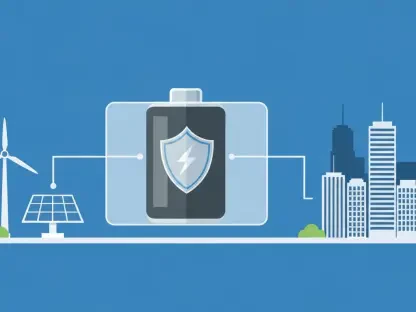We’re thrilled to sit down with Chloe Maraina, a Business Intelligence expert with a knack for turning big data into compelling visual stories. With her deep expertise in data science and a forward-thinking vision for data management, Chloe offers unique insights into the fast-evolving loyalty programs market in Vietnam. In this interview, we explore the explosive growth of this sector, the role of digital payments and technology, the rise of coalition programs, and the innovative use of gamification to boost customer engagement. Let’s dive into her perspective on what’s shaping this dynamic industry.
What’s fueling the impressive growth of Vietnam’s loyalty programs market, projected to reach US$542.4 million in 2025?
The growth is really a perfect storm of several factors coming together. Vietnam’s young, tech-savvy population is a big driver—people are eager to adopt new digital tools and engage with brands that reward them. Add to that the rapid shift to a cashless economy, which makes integrating loyalty programs with digital payments seamless. Businesses are also getting smarter about using data to personalize offers, which keeps customers coming back. The market’s growth from US$459 million in 2024 to over half a billion in 2025 shows how quickly these trends are gaining traction.
How does the projected annual growth rate of 18.2% for 2025 stack up against the market’s historical performance?
It’s a strong rate, though slightly lower than the historical 20.7% CAGR we saw from 2020 to 2024. That earlier boom was fueled by a surge in digital adoption during and after the pandemic, when businesses had to pivot fast to online platforms. The 18.2% growth for 2025 reflects a maturing market—still incredibly robust, but with a more sustainable pace as the initial wave of digital transformation levels out. It’s a sign of consistent demand for loyalty programs as a key business strategy.
How are digital payment systems reshaping the way loyalty programs operate in Vietnam?
Digital payments are a game-changer. They’ve made earning and redeeming rewards almost instantaneous, which customers love. Instead of carrying physical cards or waiting for points to process, everything happens through mobile wallets or apps in real-time. This integration also allows businesses to track spending patterns more accurately and offer rewards that feel relevant. It’s not just convenience—it’s about creating a smoother, more connected experience that fits into Vietnam’s push toward a cashless society.
Can you share how coalition loyalty programs are making an impact in Vietnam’s market?
Coalition programs are gaining ground because they offer so much more value to customers. These are programs where multiple brands or sectors team up, so you can earn and redeem points across different businesses. For example, a program like the Vingroup Card lets users collect points whether they’re shopping, dining, or even booking services within the same ecosystem. It’s a win-win—customers get flexibility, and businesses see higher engagement because the rewards feel more meaningful and accessible.
What role does gamification play in enhancing customer engagement within Vietnam’s loyalty programs?
Gamification is all about making loyalty programs fun and interactive. In Vietnam, businesses are tapping into this by adding game-like elements to their apps—think challenges, leaderboards, or spin-the-wheel rewards. It turns a transactional relationship into an emotional one. Customers aren’t just earning points; they’re enjoying the process. This approach is especially effective with younger audiences who crave experiences over plain discounts, and it’s helping brands stand out in a crowded market.
How is the rise of smartphone adoption influencing the design of loyalty programs in Vietnam?
Smartphones are basically the gateway to modern loyalty programs in Vietnam. With penetration rates soaring, businesses are designing mobile-first strategies—apps that let you track points, redeem rewards, or get personalized offers on the go. It’s not just about accessibility; smartphones enable real-time notifications and location-based deals, which make the experience more relevant. For many Vietnamese consumers, their phone is the primary touchpoint with brands, so loyalty programs have to live there to stay competitive.
What do you see as the biggest challenge for businesses trying to keep up with these rapid changes in the loyalty market?
One of the toughest hurdles is balancing innovation with data privacy. As businesses lean on data analytics to personalize offers, they’ve got to ensure they’re not crossing lines with customer trust. Vietnam’s regulations around data protection are evolving, and companies need to stay ahead of compliance while still delivering tailored experiences. Plus, with so many players jumping into the loyalty space, standing out without overwhelming customers with too many programs or notifications is a real tightrope walk.
What is your forecast for the future of Vietnam’s loyalty programs market over the next few years?
I’m very optimistic. With the market projected to nearly double to US$971.2 million by 2029, I think we’ll see even deeper integration of technology—think AI-driven personalization and more seamless digital payment experiences. Coalition programs will likely expand, pulling in smaller businesses to create broader ecosystems. Gamification will get more sophisticated too, leveraging augmented reality or social media tie-ins. The key will be maintaining customer trust through transparency, especially with data usage. Vietnam’s loyalty landscape is set to be a global benchmark for innovation if these trends keep up.









